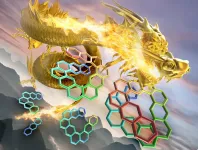INFORMATION:
Scientists spotted RPS-12 protein as a potential target for anti-cancer therapy
2021-01-29
(Press-News.org) Using the developing eye of the fruit fly as a test platform, researchers found that RPS-12 protein overproduction appears to trigger triple-negative breast cancer and possibly some other malignancies. The protein indirectly switches on an important inracellular signaling pathway active while the embryo develops and shut down in healthy cells of adults. Far Eastern Federal University (FEFU), the University of Geneva, and the Institute of Protein Research (Russia) scientists addressed the problem in Scientific Reports.
Researchers have taken another step towards targeted treatment of tumors. The idea of such a therapy is to identify the necessary target proteins playing instructive functions in tumor initiation or progression in order to suppress tumor development while causing minimal harm to healthy cells.
Using fruit flies and a cDNA library of patient-derived triple-negative breast cancer, scientists launched a massive screening for potential novel human oncogenes, i.e. genes that after a mutation activate elements of cancerous transformation. To find the potential targets, scientists inserted genes found in the human tumor into the Drosophila genome, drove their misexpression in the eye of the insect, and observed the potential defects in the development of this sensitive organ.
After they transplanted the human protein RPS-12, the Drosophila eye shrank and obtained a mirror-like appearance.
"This phenomenon reminds the classic glazed phenotype that Thomas Morgan, the father of Drosophila genetics, discovered back in the 1920s. Only in the 90s of the 20th century, it was understood that the mutation affects the Wingless gene. This Drosophila gene corresponds to the WNT genes that trigger the signaling pathway of the same name in humans. The activity of the WNT signaling pathway is vital for the development of the human body at the embryonic stage, though switched off at later stages. Mutations or epigenetic changes can reboot the signaling pathway in adults. After that, the initially healthy cells start a massive proliferation. This is one of the reasons for the development of triple-negative breast cancer and some other forms of cancer, such as in the colon, liver, ovaries, etc.", explains Vladimir Katanaev, the project ideologist, head of the laboratory of pharmacology of natural compounds at the FEFU School of Biomedicine.
Scientists revealed that the phenotype of the glazed eye arises because the expression of human RPS12 in the eye of Drosophila overactivates the WNT / Wingless-signaling pathway. The overabundance of RPS12 protein stimulates the production of active forms of Wingless capable of diffusing over long distances in the tissue and reaching distant cells. Reciprocally, the reduced amount of RPS12 decreases the production of such Wingless forms.
"The proteins of the Wingless-WNT family are very "sticky". Their natural distribution in the body tissues is limited, and the number of active forms migrating over long distances is under strict regulation. WNT is an example of morphogens, i.e. substances that are produced in specific places during embryogenesis and spread through the tissue generating a concentration gradient. If we consider a human hand as an example, the palm, elbow, and shoulder are formed due to the reaction of cells to different concentrations of the WNT morphogen", says Vladimir Katanaev.
Special mechanisms are responsible for the production of WNT-forms capable of spreading through tissue over long distances. One of the mechanisms the team studied earlier is based on the protein reggie-1/fotillin-2.
"It turned out that RPS12 plays a similar role. Thus, we have unveiled a new mechanism for controlling the production of active forms of WNT, and suggest that the RPS12 protein may become a new potential target for anticancer therapy. Further research will show how this protein is really suitable for therapeutic targeting", concluded Vladimir Katanaev.
About 70-80 percent of the genes responsible for human disease have orthologous genes in Drosophila. Evolutionary, these are practically the same genes, but with some individual sequences in humans and fruit flies.
The Drosophila eye development is complex and multistage. At various phases of its development, various signaling pathways and cellular mechanisms one knows in humans become active. Based on this, scientists assumed that any human oncogene, if "transplanted" into the eye of a Drosophila, would lead to a disruption in the development of this organ. A fly with an affected eye lives up to maturity, meaning that it is easy to observe the eye developmental disorders, simply by studying the insect through a microscope.
Scientists started the HumanaFly project more than 10 years ago at the Institute of Protein Research (Pushchino, Russia) in order to find new human oncogenes via the fruit fly eye screening platform. The final experiments of the first phase were carried out in 2020. An extensive genetic library has been formed for the subsequent search for components and mechanisms implicated in the development of cancer.
ELSE PRESS RELEASES FROM THIS DATE:
Childhood trauma could affect development, treatment of multiple sclerosis
2021-01-29
CHAMPAIGN, Ill. -- Childhood trauma could affect the trajectory of multiple sclerosis development and response to treatment in adulthood, a new study in mice found.
Mice that had experienced stress when young were more likely to develop the autoimmune disorder and less likely to respond to a common treatment, researchers at the University of Illinois Urbana-Champaign found. However, treatment that activated an immune-cell receptor mitigated the effects of childhood stress in the mice.
Multiple sclerosis is a progressive autoimmune disease in which the body attacks and strips ...
Singles or pairs in cancer cells
2021-01-29
It all sounds similar to a dance event - but are singles or couples dancing here? This was the question Ali Isbilir and Dr. Paolo Annibale at the Max Delbrück Center for Molecular Medicine in the Helmholtz Association (MDC) were trying to answer. However, their investigation did not involve a ballroom, but the cell membrane. The question behind their investigation: does a particular protein receptor on the surface of cancer and immune cells appear alone or connect in pairs?
The receptor is called "CXCR4" - the subject of heated debate among experts in recent years due to its mysterious relationship ...
Researchers illustrate the need for anti-racism in kidney care, research
2021-01-29
(Boston)--There is a growing awareness of systematic inequality and structural racism in American society. Science and medicine are no exception, as evidenced by historical instances of discrimination and overt racism.
In a perspective piece in the Journal of the American Society of Nephrology, researchers from Boston University School of Medicine (BUSM), take an honest look at how the current practice of nephrology (kidney medicine) may have elements rooted in racist ideologies.
For twenty years, kidney function has been estimated based on lab tests and equations that consider ...
Reduced-dose RT with Cisplatin improves outcomes for HPV-associated oropharyngeal carcinoma
2021-01-29
A combination of reduced-dose radiotherapy using intensity-modulated radiotherapy (IMRT) combined with concurrent cisplatin met the threshold for disease control and quality of life compared to the standard of care for good-risk patients with HPV-associated oropharyngeal squamous cell carcinoma on the NRG Oncology clinical trial NRG-HN002. The outcomes from this data justify the advancement of the reduced radiotherapy dose with cisplatin to a Phase III clinical trial setting in this population. These results were recently published in the Journal of Clinical Oncology.
"Currently, patients with HPV-associated ...
Scientists identify locations of early prion protein deposition in retina
2021-01-29
WHAT:
The earliest eye damage from prion disease takes place in the cone photoreceptor cells, specifically in the cilia and the ribbon synapses, according to a new study of prion protein accumulation in the eye by National Institutes of Health scientists. Prion diseases originate when normally harmless prion protein molecules become abnormal and gather in clusters and filaments in the human body and brain.
Understanding how prion diseases develop, particularly in the eye because of its diagnostic accessibility to clinicians, can help scientists identify ways to slow the spread of prion diseases. The scientists say their findings, published in the journal Acta Neuropathologica Communications, ...
New technique identifies important mutations behind Lynch Syndrome
2021-01-29
Colorectal cancer is the third most common form of cancer. While 90% of cases are in people older than 50, there is an as-yet unexplained rising incidence in younger people.
Family history ranks high among risk factors for developing colorectal cancer, and people with such a history are often advised to get more frequent screening tests or start screening sooner than the recommended age of 45 years old. Those with a family history of cancer often seek out genetic tests to look for mutations linked to cancer risk. However, those tests don't always provide helpful information.
In a new paper in the American Journal of Human Genetics, Jacob Kitzman, Ph.D., of the ...
Coiling them up: Synthesizing organic molecules with a long helical structure
2021-01-29
Scientists at Tokyo Institute of Technology (Tokyo Tech) produced and extensively characterized novel organic molecules with a long helical structure. Unlike previous helical molecules, these longer compounds exhibit special interactions between coils that could give rise to interesting optical and chemical properties with applications in light polarization, catalysis, and molecular springs.
More often than not, organic molecules with unique 3D structures bear physicochemical properties that cannot be found in other types of compounds. Helicenes, chains of simple benzene rings that adopt a helical structure, are a good ...
How is human behavior impacting wildlife movement?
2021-01-29
For species to survive in the wild, maintaining connectivity between populations is critical. Without 'wildlife corridors', groups of animals are isolated, unable to breed and may die out. In assessing wildlife connectivity, many aspects of the landscape are measured, but the impact of human behaviour has largely been overlooked. Now, an international team led by the University of Göttingen and Humboldt University Berlin, introduce the concept of 'anthropogenic resistance', which should be studied to ensure sustainable landscapes for wildlife and people ...
Reindeer lichens are having more sex than expected
2021-01-29
In northern Canada, the forest floor is carpeted with reindeer lichens. They look like a moss made of tiny gray branches, but they're stranger than that: they're composite organisms, a fungus and algae living together as one. They're a major part of reindeer diets, hence the name, and the forest depends on them to move nutrients through the ecosystem. They also, at least in parts of Quebec, are having a lot more sex than scientists expected. In a new study in the American Journal of Botany, researchers found that the reindeer lichens they examined have unexpected levels of genetic diversity, indicating that the lichens have been doing more gene-mixing with each other than the scientists would have guessed.
"We were surprised because this species of reindeer lichen had ...
Researchers probe new territory in treating patients with lung cancer during pandemic
2021-01-29
(Singapore--January 29, 2021 11:00 p.m. SPT/10:00 a.m. EST)--On February 27, 2020, the flagship journal of the International Association for the Study of Lung Cancer, the Journal of Thoracic Oncology, published a case study that described two patients from Wuhan, China who recently underwent lung lobectomies for adenocarcinoma and were retrospectively found to have had COVID-19 at the time of surgery.
Eleven months later, the lung cancer research community gathered virtually at the IASLC 2020 World Conference on Lung Cancer Singapore to share a number of research ...





